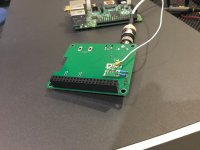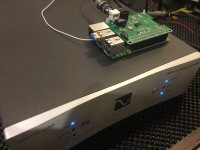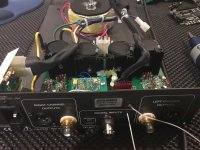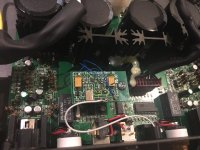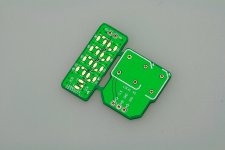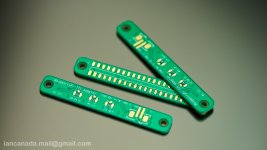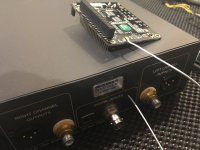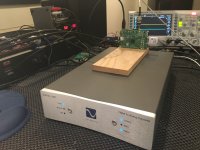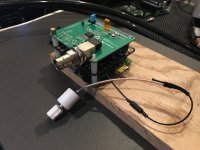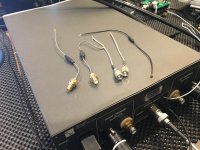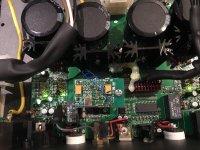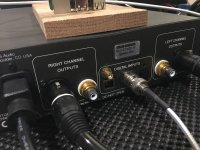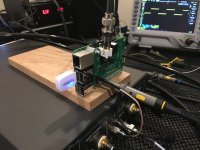The next, I'll test DACs in master clock mode. It would be a great news for this kind of DACs with having an isolator between Raspberry Pi.
I have a HifiBerry DAC + Pro, it can generate both BCK and LRCK from local master clock, RPi will be slave in this case, high jitter issue will be fixed. HifiBerry DAC + Pro will work with my isolator in bi-directional mode.
Ian
I have a HifiBerry DAC + Pro, it can generate both BCK and LRCK from local master clock, RPi will be slave in this case, high jitter issue will be fixed. HifiBerry DAC + Pro will work with my isolator in bi-directional mode.
Ian
A pity you haven't managed to combine an isolator and a reclocker.
Especially since you've been Mr. FIFO for quite some years over here
and especially that the PI is known for its rather lowQ I2S.
I hope you'll gonna change this sooner or later.
Good luck with your isolator.
I think there are people that want a combined isolator/reclocker but there are others that do not need a reclocker added because they will combine the isolator with Ian's fifo and clock. I am in the latter group as I will be happy with having an I2S isolator to direct connect an Odroid SBC without the need for an USB to I2S converter.
I, for one, am happy that this isolator hat does not have a reclocker. So +1. Just isolation, including ground. Many nice pi dac hats have a reclocker close at the dac chip. In the mean time a kali isolator reclocker will suffice.
An easy way out.
Just build in a reclock-bypass option.
DACs like Sokeris might not need a reclocker either.
I do think though that the "market" for a reasonably priced combined
isolator and reclocker HAT is huge in comparison to much more
complex already existing standalone installations.
I'd never buy a separate isolator and reclocker HAT.
Good luck.
Just build in a reclock-bypass option.
DACs like Sokeris might not need a reclocker either.
I do think though that the "market" for a reasonably priced combined
isolator and reclocker HAT is huge in comparison to much more
complex already existing standalone installations.
I'd never buy a separate isolator and reclocker HAT.
Good luck.
Thanks soundcheck, I will 🙂
Ian
Does that mean my most wanted: a reclocked, isolated i2s hat for a Pi might be on it's way Ian? 🙂
Does that mean my most wanted: a reclocked, isolated i2s hat for a Pi might be on it's way Ian? 🙂
@simon dart
Yes, it has been on my list for long time, just let me figure out how soon can I make it, for audiophile only 🙂
Ian
For DSD playback, will this isolator & daughter board work with an IQaudio Pi-DAC+ on an RPi? The Pi-DAC+ uses the PCM5122 chipset, but I haven't been able to find a reference that it is capable of handling a DSD signal, and the name of the chip gives me doubts...
For DSD playback, will this isolator & daughter board work with an IQaudio Pi-DAC+ on an RPi? The Pi-DAC+ uses the PCM5122 chipset, but I haven't been able to find a reference that it is capable of handling a DSD signal, and the name of the chip gives me doubts...
Hi jclin4,
This isolator works for IQaudio Pi-DAC+ in both master and slave mode. However PCM5122 itself dosen't support DSD decoding, so just I2S I think.
That's why now I'm interested in developing some DSD/I2S DACs for Raspberry Pi.
http://www.diyaudio.com/forums/pc-b...raspberry-pi-start-es9018k2m.html#post4962508
Ian
Ian, many thanks for confirming what I suspected. Yep, I later caught your thread on the DAD HAT and am very interested in that, although obviously it is much later in its development lifecycle than the isolator board.
Hi Ian,
Do you know of any nice tiny pre-built u.fl daughterboards (single or multiple) like the one I hacked off an old wifi board in the pic (added to a Digi+PRO for MCLK out) ? Or a better solution to that?
Thanks!
And on the other side soldered the coax directly in for now.

Do you know of any nice tiny pre-built u.fl daughterboards (single or multiple) like the one I hacked off an old wifi board in the pic (added to a Digi+PRO for MCLK out) ? Or a better solution to that?
Thanks!
An externally hosted image should be here but it was not working when we last tested it.
An externally hosted image should be here but it was not working when we last tested it.
And on the other side soldered the coax directly in for now.
Last edited:
Ok, google photos is odd sometimes if you're logged in or not, even if it's public...
Hi have two kinds of adapter board, I'm not sure if they work for you...
Ian
Attachments
Last edited:
Hi have two kinds of adapter board, I'm not sure if they work for you...
Ian
Hmmm, not quite-- I like that little pi board! Is there anything special about the u.fl jumpers you use here and there in pics, is there a certain spec (ohms, shielding) for those in this use? Do you try to keep those short?
Thanks!
Last edited:
Hmmm, not quite-- I like that little pi board! Is there anything special about the u.fl jumpers you use here and there in pics, is there a certain spec (ohms, shielding) for those in this use? Do you try to keep those short?
Thanks!
Hi sckramer,
u.fl is a standard RF connector which was first introduced by Hirose.
https://en.wikipedia.org/wiki/Hirose_U.FL
It's a good solution to transmit clock signals from board to board up to 6GHz. The impedance is 50ohm. So, 50ohm u.fl cable is also required. Shorter would be better but doesn't make big difference. The most important thing is to keep impedance continues along the clock trace.
Ian
Hi Ian,
i hope it´s ok that i step in.
so you really still have some of the RPi I2S adapter boards ?
(thought they were all gone..)
i really would like to have one (or two).
is it okay to send you a PM ?
cheerio,
Balou
i hope it´s ok that i step in.
so you really still have some of the RPi I2S adapter boards ?
(thought they were all gone..)
i really would like to have one (or two).
is it okay to send you a PM ?
cheerio,
Balou
Hi have two kinds of adapter board, I'm not sure if they work for you...
Ian
Hi Ian,
So I went researching u.fl a bit more and it's really is a delicate connection meant to be connected once or very few times, good for internal or if you have a project done and not gonna touch it anymore. Not nearly robust enough for this.
This project started as researching adding i2s in, so removed the crystal but it was just mute. Got to know the circuit really well, and decided to try ext. MCLK in. ( might revisit i2s later, may know what it is now )
(This is a PSAudio DLIII)
Found theres a nice medium connector between u.fl and full BNC... and look what I found in an old wifi router, all kinds of good stuff:
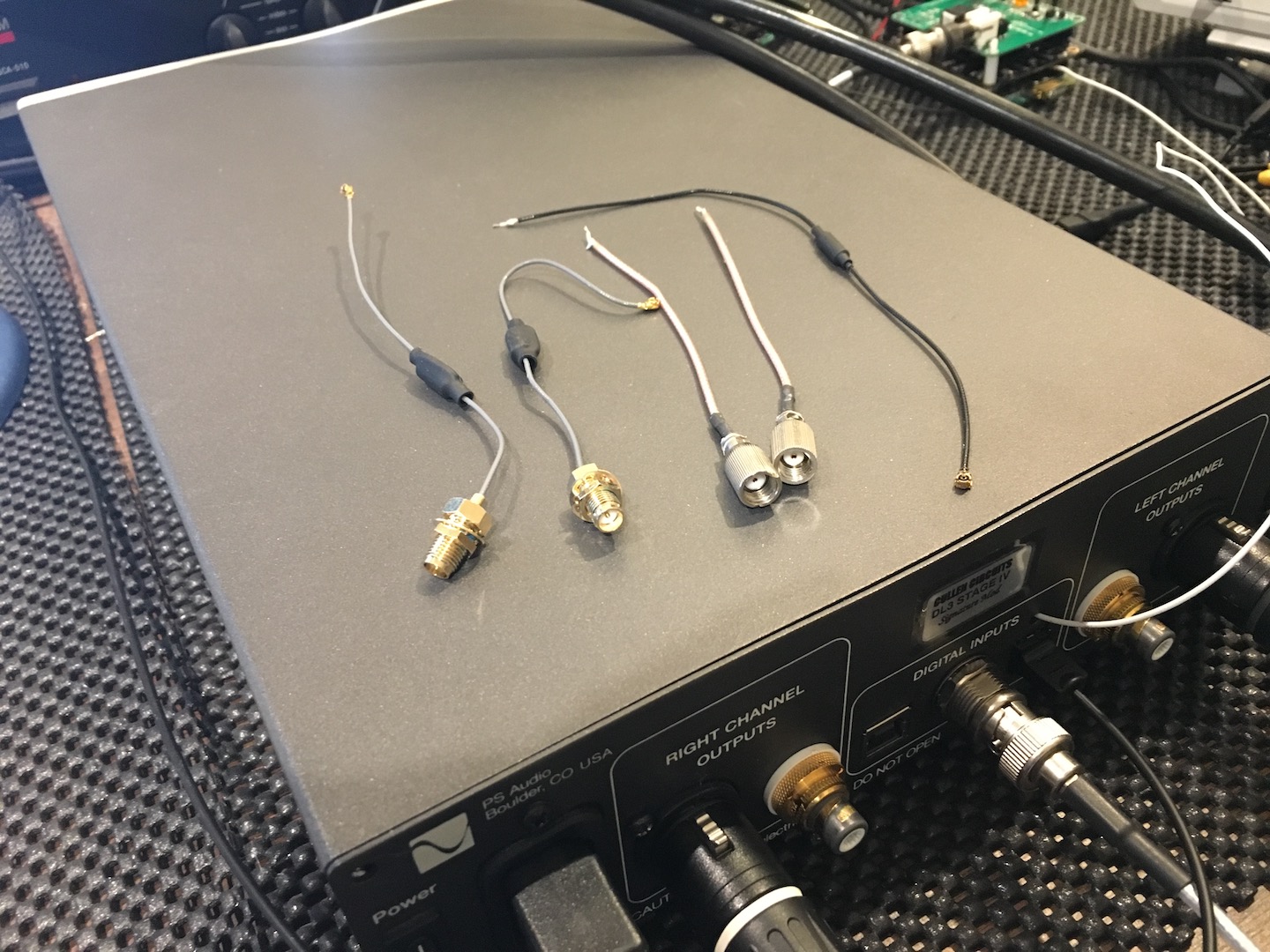
Here's how I ended up doing it: (left the ferrite bead)
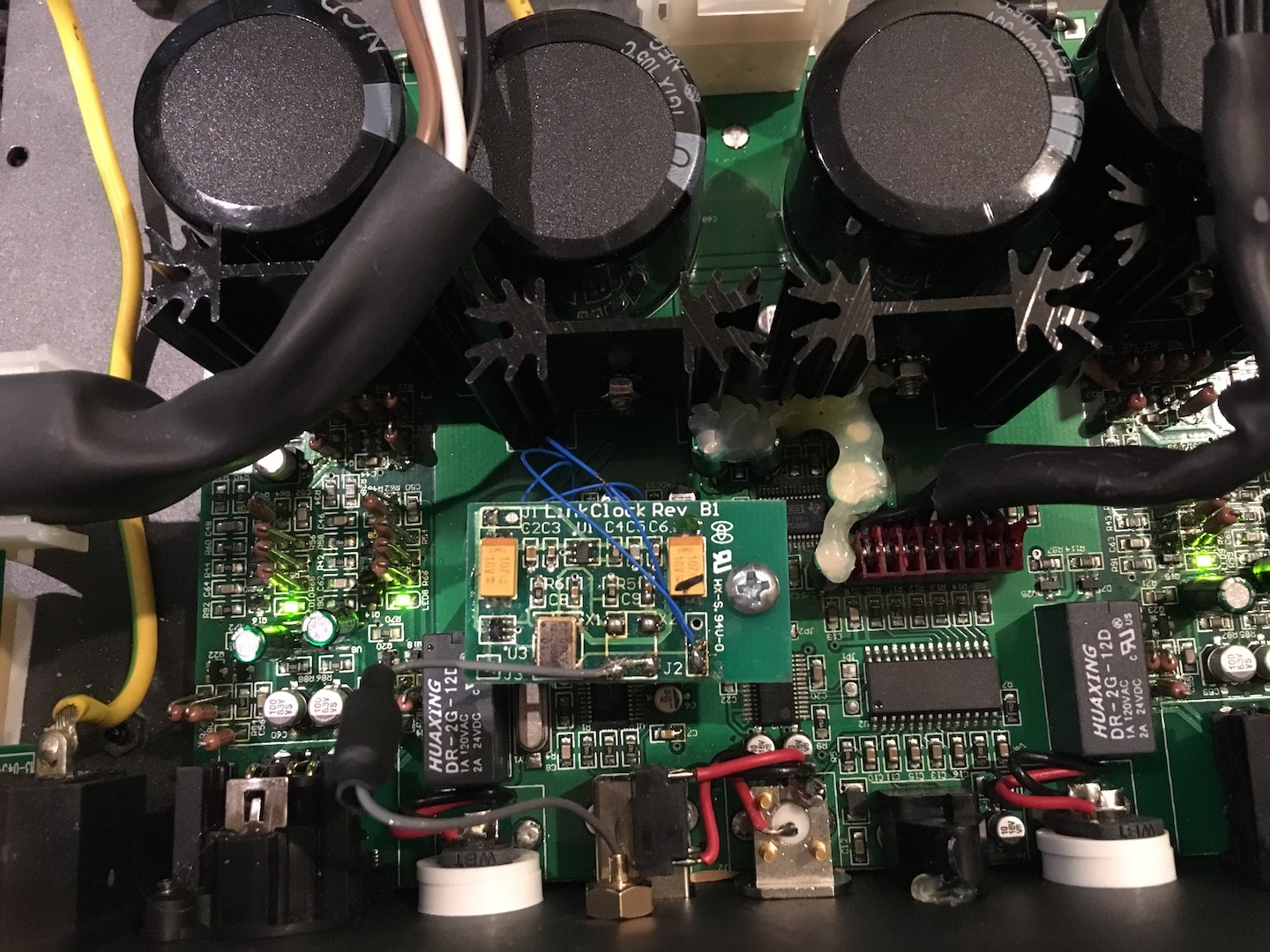
ext. nice medium sized connection: (added above the usb)
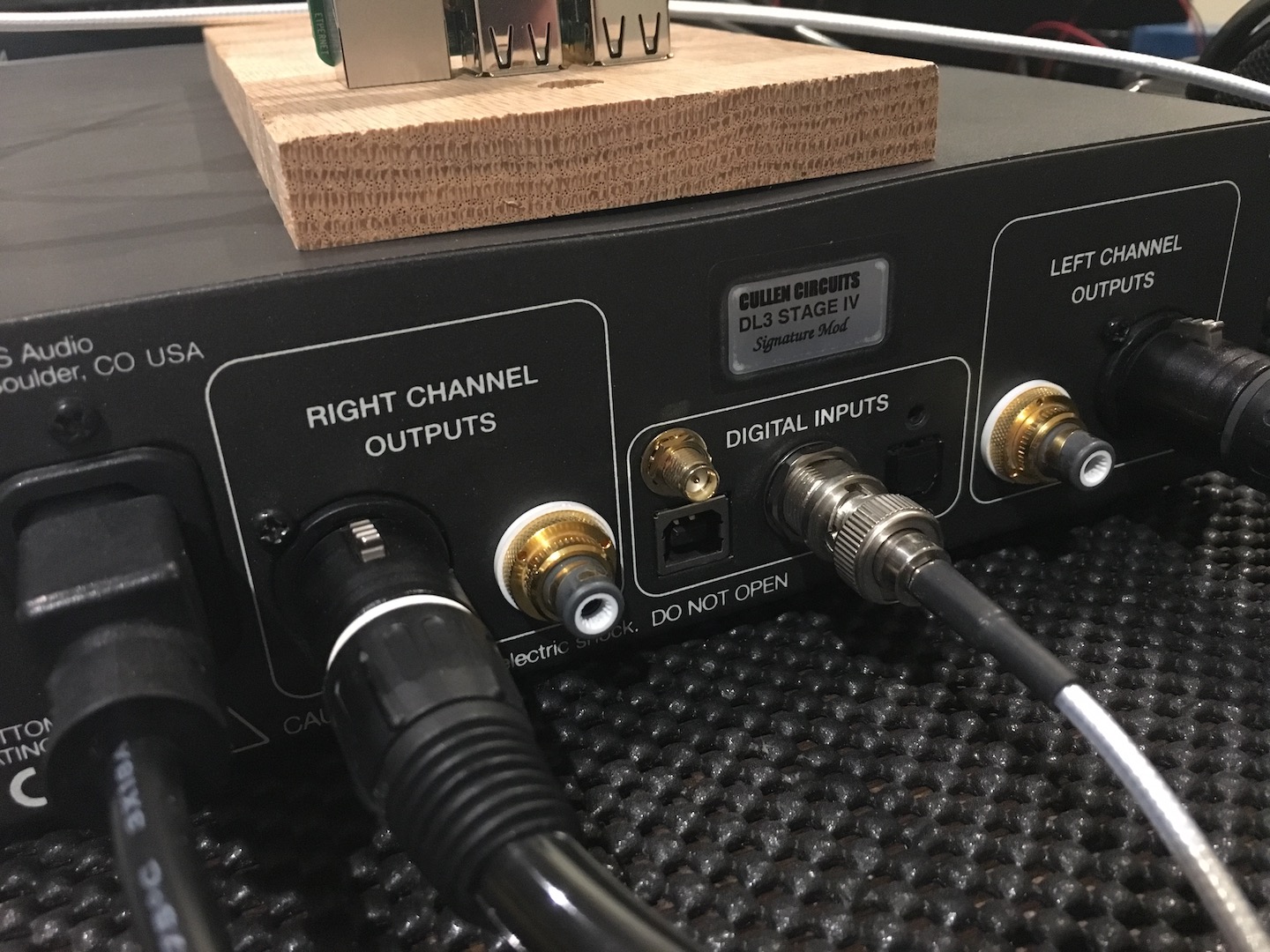
Made an adapter for pi headers: (working on digi+ pro)
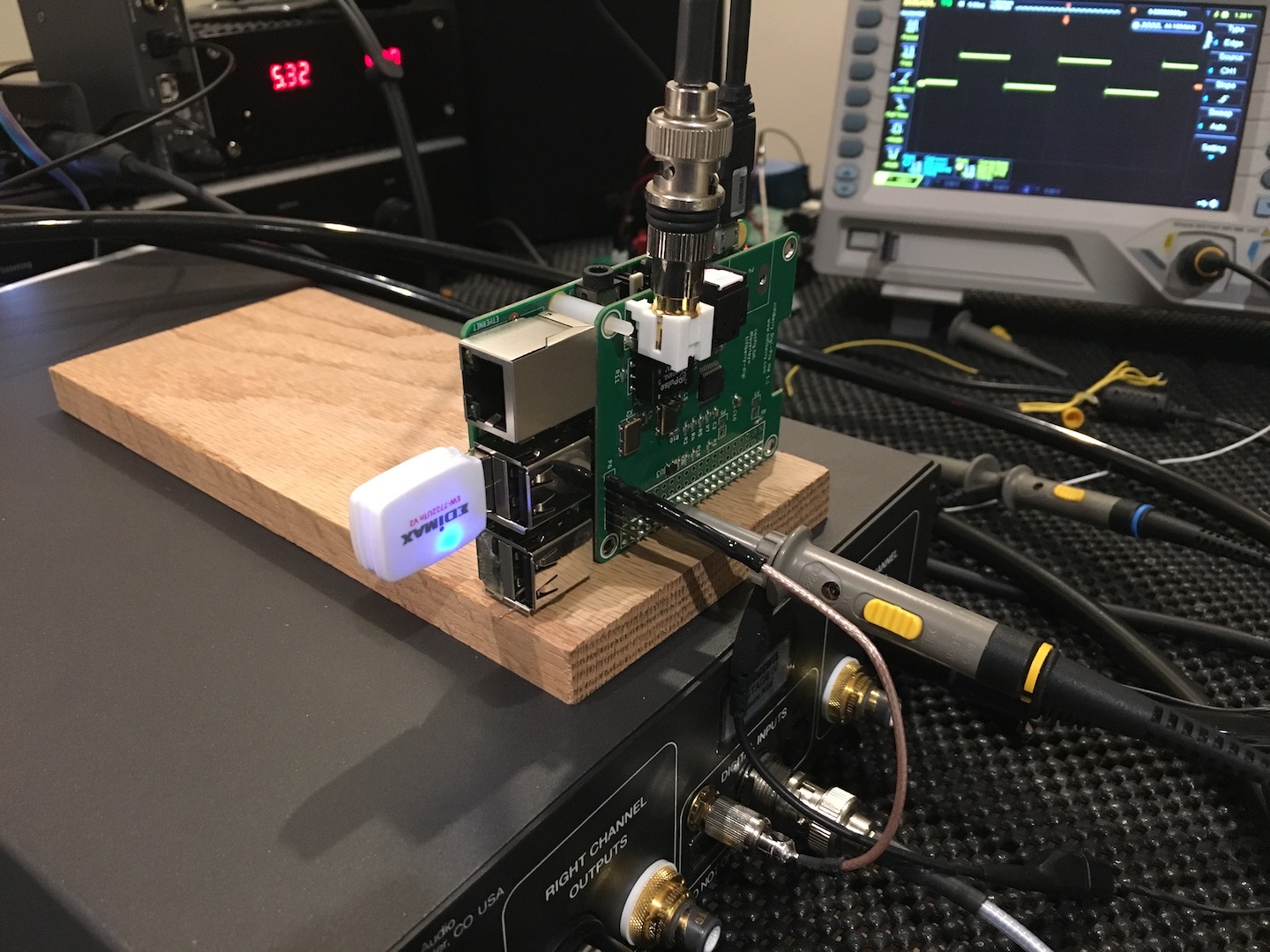
Made an adapter u.fl to that medium coax: (my slaved digi+ on a kali -- kali does have a u.fl for MCLK underneath, attached there and strain relieved)
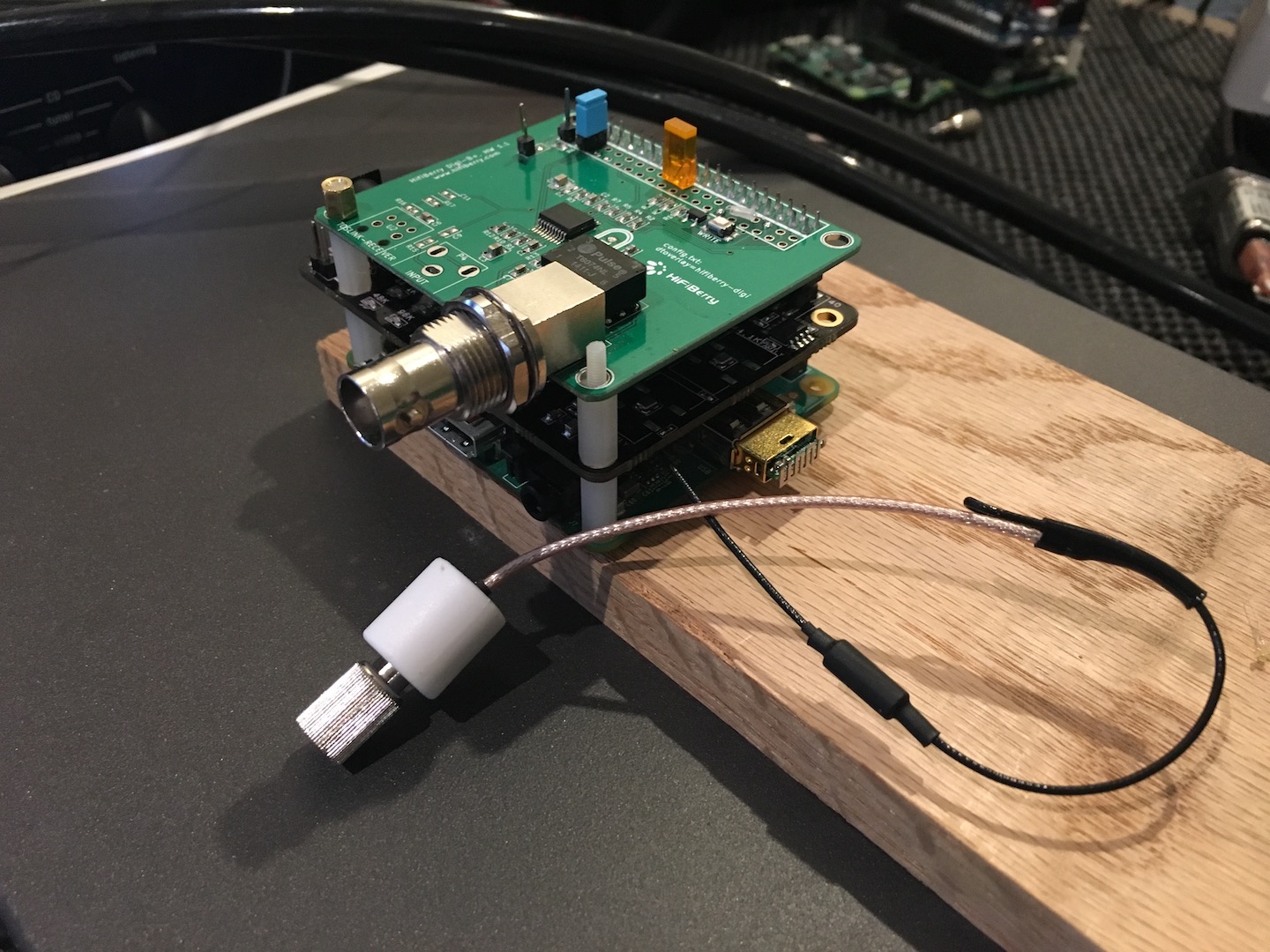
After listening for a week with the lash up (that original chintzy white wifi u.fl wire in prev post) to a Kali/slave Digi+ just had to make it permanant it is such a fundamental jump in sound quality!
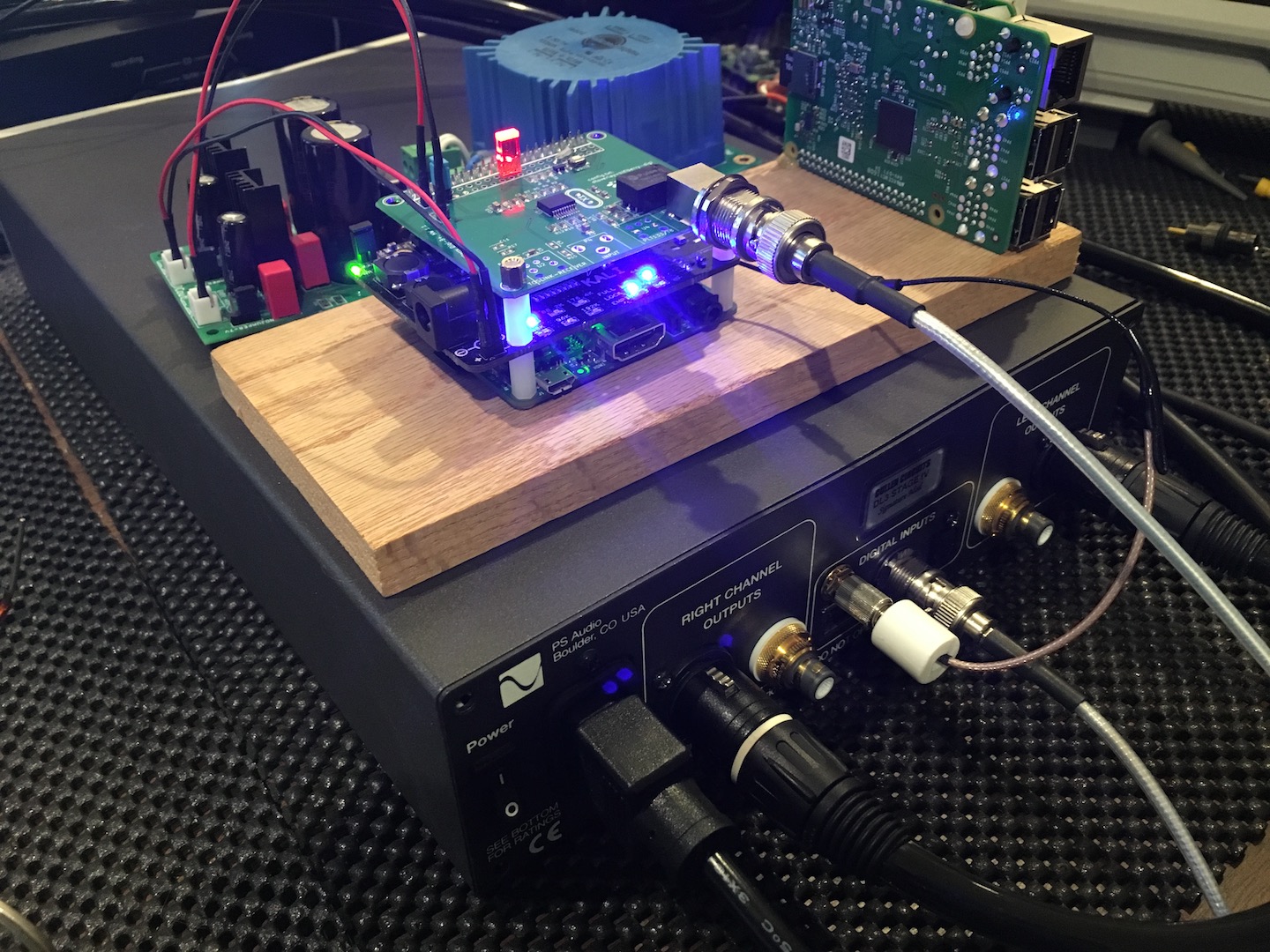
Any thoughts or critiques please?
Is it the single clock domain (source), instead of 2 (source/dac) giving such a difference? This Dac had a good 6 year run and my "reference" -- so I'm fearless 😀 Also the beauty of this is... just select 96KHz on the front and it's back to stock operation! Never used the 192KHz upsample setting anyway (why I chose to rip out that supporting clock 🙂)
It was fun analyzing the clocks on the scope, attached one channel on the dac, one on the source (the internal i2s lines)... and you can see the deviation, and jittery in relation to each other... now everything's in lock step.
Thanks!
So I went researching u.fl a bit more and it's really is a delicate connection meant to be connected once or very few times, good for internal or if you have a project done and not gonna touch it anymore. Not nearly robust enough for this.
This project started as researching adding i2s in, so removed the crystal but it was just mute. Got to know the circuit really well, and decided to try ext. MCLK in. ( might revisit i2s later, may know what it is now )
(This is a PSAudio DLIII)
Found theres a nice medium connector between u.fl and full BNC... and look what I found in an old wifi router, all kinds of good stuff:
Here's how I ended up doing it: (left the ferrite bead)
ext. nice medium sized connection: (added above the usb)
Made an adapter for pi headers: (working on digi+ pro)
Made an adapter u.fl to that medium coax: (my slaved digi+ on a kali -- kali does have a u.fl for MCLK underneath, attached there and strain relieved)
After listening for a week with the lash up (that original chintzy white wifi u.fl wire in prev post) to a Kali/slave Digi+ just had to make it permanant it is such a fundamental jump in sound quality!
Any thoughts or critiques please?
Is it the single clock domain (source), instead of 2 (source/dac) giving such a difference? This Dac had a good 6 year run and my "reference" -- so I'm fearless 😀 Also the beauty of this is... just select 96KHz on the front and it's back to stock operation! Never used the 192KHz upsample setting anyway (why I chose to rip out that supporting clock 🙂)
It was fun analyzing the clocks on the scope, attached one channel on the dac, one on the source (the internal i2s lines)... and you can see the deviation, and jittery in relation to each other... now everything's in lock step.
Thanks!
Attachments
Last edited:
Scott, thanks, very interesting to read.
One question: Why didn't you use Kali's pin 29 for the MCLK?
One question: Why didn't you use Kali's pin 29 for the MCLK?
Scott, thanks, very interesting to read.
One question: Why didn't you use Kali's pin 29 for the MCLK?
Thanks! Look closely at the top of the digi+ -- pin29 is connected to pin36 (the digi+ WM8804) MCLK in... need it there when slaved... cool huh! (also notice the digi+ crystal is removed)
Hi Ian,
i hope it´s ok that i step in.
so you really still have some of the RPi I2S adapter boards ?
(thought they were all gone..)
i really would like to have one (or two).
is it okay to send you a PM ?
cheerio,
Balou
Hi Balou,
I can give you two of the Pi I2S adapter PCB for free if you just need the bare PCB.
You can PM me.
Ian
- Home
- Source & Line
- PC Based
- Something cool for Raspberry Pi/ODROID: I2S/DSD isolator HAT with native DSD decoder
